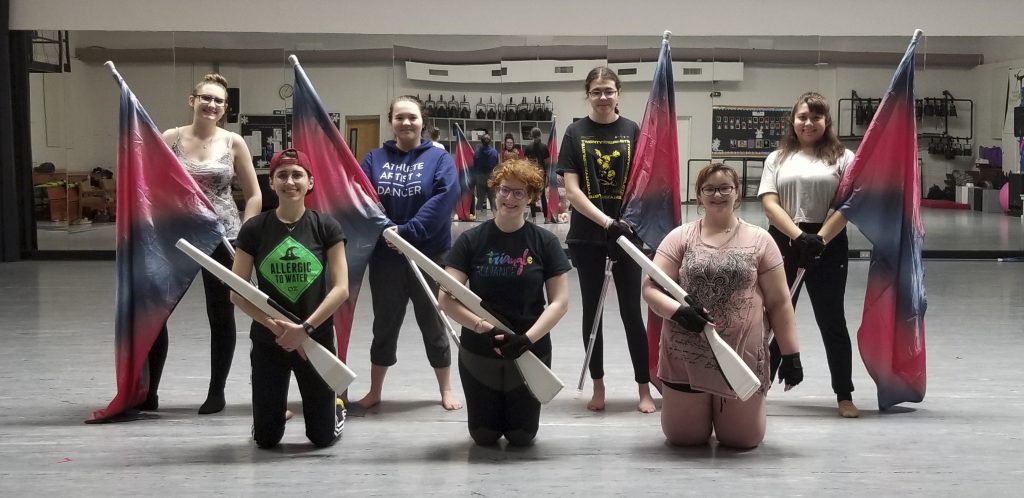Rylie Horrall | Lifestyle Editor

Snacks: For most parties, snacks are some of the most important must-haves. People will graze on chips while watching TV, or start a conversation over the appetizers. An easy set up is an assortment of chips in large bowls sporadically placed around, or, if chips aren’t preferred, use pretzels and popcorn, or a combination of all of these to provide variety. Other finger foods that can be prepared with minimal effort are mozzarella cheese sticks, mini corn dogs or hot dogs, pizza rolls or various fruit and vegetable platters. Alternatively, simply ordering a pizza is a quick way to provide food for a larger group of people.
For those that decide on chips, try making one of these dips to pair with it.
ONION DIP
Start to finish: ~1 hour
1 packet of onion dip seasoning
16 ounces of sour cream
Add sour cream to a bowl with the onion dip seasoning. Mix together thoroughly and let it sit for at least an hour before serving. Alternatively, seasoning can be poured straight into the sour cream container.
BACON CHEESEBURGER DIP
Start to finish: 40 minutes
½ pound ground beef
6 strips bacon, cut into 1 inch pieces
1 small onion, diced
1 clove garlic, chopped
4 ounces of cream cheese, room temperature
½ cup sour cream
¼ cup mayonnaise
¾ cup mozzarella, shredded
¾ cup sharp cheddar cheese, shredded
1 tablespoon Worcestershire sauce
2 tablespoons ketchup
1 teaspoon mustard
Cook the ground beef in a skillet over medium heat. Once finished, drain the grease from the pan and set it aside. Cook the bacon in the same pan until crispy for about 6–10 minutes. Set aside and save a tablespoon of the grease.
Add onion to the pan with the bacon grease and saute until tender, about 5–7 minutes.
Add the garlic and saute until fragrant, about a minute, being careful not to let it burn.
Mix the ground beef, bacon, onions and garlic, cream cheese, sour cream, mayonnaise, ½ cup of the mozzarella cheese, ½ of the cheddar cheese, Worcestershire sauce, mustard and ketchup together in a large bowl. Pour into a baking dish.
Bake in a preheated oven (350 °F) until the top starts to turn a light golden brown and bubbling, taking about 20–25 minutes. A few minutes before it is done, add ¼ cup of cheddar cheese and a ¼ cup of mozzarella cheese to the top and stick it back in the oven until the cheese is melted. Serve with warm tortilla chips.
Recipe from wishesndishes.com

Decorations: No party is complete without decorations, but they don’t have to be extravagant. Red, white and yellow or gold — depending on the preference of team — can serve as the palette for decorations. Something simple like streamers can liven up a room in no time. They can be hung up where the wall meets the ceiling or arranged in the doorway in an alternating pattern. Draping all three colors on a bare wall will make for a fun, themed photo opportunity to prove just how lively the day was.
Another decoration choice is a banner; many stores offer blank ones that can be customized specifically, or a cheaper route is to buy one and write on it. Pennant banners can come in a variety of colors to match the theme of the party, and can be relatively low cost. Take a black, gold or silver sharpie and go crazy with writing witty slogans.
Finally, either buying or making football shaped wall adornments can bring it all together. Some stores that have decorations for sale will likely have something like this, or drawing a football on printer or construction paper and cutting them out will also work just fine. Creating the decoration could also be a fun activity for those that are setting up the party.

Dressing up: Repping one of the teams is a must for those attending or hosting a Super Bowl party. The easy way to do this is by wearing a jersey of the preferred team, but, for those that don’t own a Kansas City Chiefs or San Francisco 49ers jersey, opt to wear a shirt with the team logo or that matches the respective team’s colors. For die-hard fans of either team, try decking out fully in the team’s colors — match pants with a top to create an all red outfit, or try pairing fun socks or a beanie with the rest of the ensemble.
For those who want to take their team spirit to the next step, try using face paint. It’ll stand out in photos and can be an entertaining activity for anyone that attends. Get prepped beforehand, or plan something for the guests to do before the game begins. Set up a painting station with face paint and brushes — or markers that are safe to use on the face — and have the guests line up and start. If everyone has the same thing drawn on their faces, take a group selfie to show off some team spirit.
Contact the author at rhorrall17@wou.edu
Photo by Caity Healy (jersey)
Photos by Rylie Horrall (decorations and chips)













